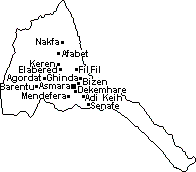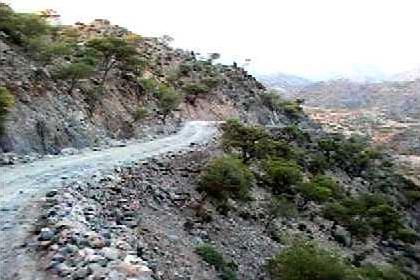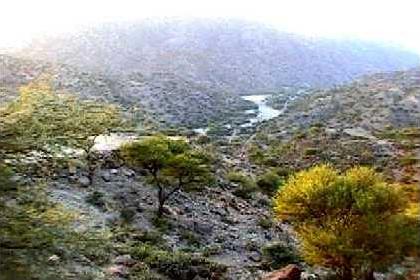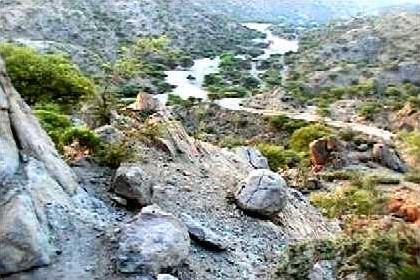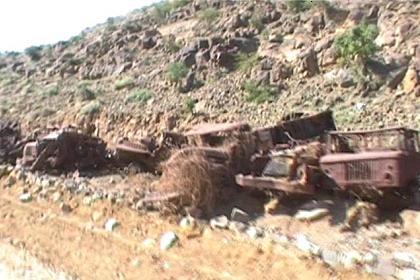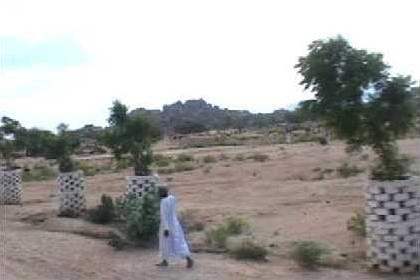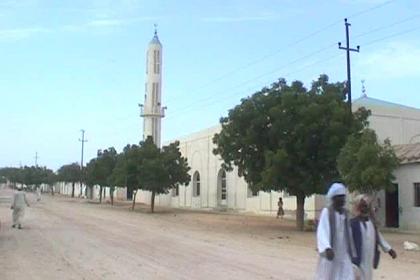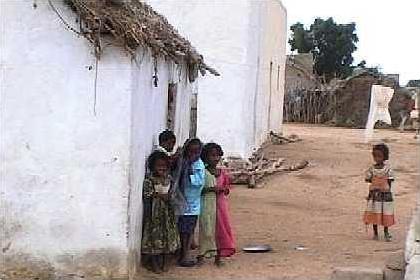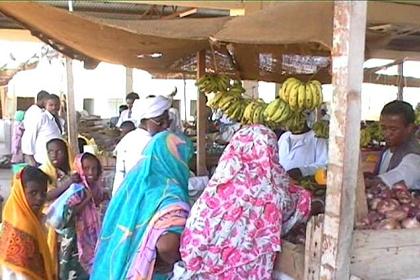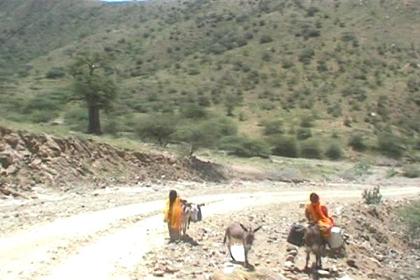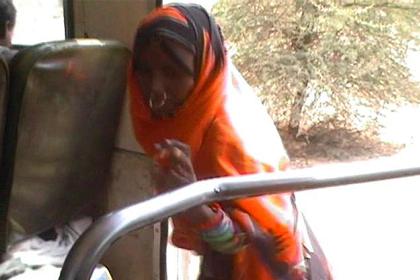Afabet & Nacfa Eritrea - September 17th 2002
We wake up at 5:00 in the morning. 30 minutes later we gather at the bus with the other passengers. There is a lot more people then seats. Usually there is two buses serving Nakfa, but one is in repair. Lots of men and woman are begging to make the ride. I understand it is forbidden to leave with more passengers then seats. Gebre bought our tickets yesterday in the evening to be sure of a return ticket. When all cargo is lashed on the roof of the bus we leave Nakfa, descending the hills we had to climb yesterday. I talked to the driver yesterday, and drank some araki with him. It gives me a better feel on the narrow road, now that I know the man.
Curiously enough, people waiting in the dessert are allowed to enter the bus. On the other hand, it would be quite uncomfortable to keep them waiting for two days. Approximately every hour we make a stop to drink some tea and stretch our legs and to allow the engine of the bus to cool down. The bus is also checked before entering any village. The Eritrean passengers have to show a permit to travel in the area and their ID. Any Ethiopian spy is thereby convicted to do his work either on the back of a donkey or just go on foot.
Again we pass the scene of the Denden front line, where, in the early part of 1980, the Ethiopian armed forces were crushed by the EPLF and over 100 military vehicles and seventeen T-54 tanks were captured. To prevent further losses of military hardware to the EPLF, the Ethiopians had to use their air force to destroy their tanks and vehicles, as to prevent further loss of material to the EPLF.
In Afabet there is 30 minutes stop over. Instead of drinking tea, I decide to walk a few hundred meters through the village of Afabet and visit the covered market. When it is time to leave the driver of the bus sounds the horn until all passengers are back in the bus.
At 13:00 we arrive in Keren. I take a quick bath in Hansu and Afworki's house and roam the streets in the center of the town and its surroundings, climbing hills to enjoy the view over the town. On one hill with a huge candle on top, the children call me to come up. When I join them on top of the hill, they want to know my name and they want to have Nakfa's. I think they should earn them, so I ask two of them to show me their city. It is a bit difficult to get rid of the others. I do not need ten guides, nor do I have so many 5 or 10 Nakfa notes. Their knowledge of English is poor, but I learn some Tigrinya instead. "Bette Christian", church, "Mesgit", mosque.
When it is getting dark I walk back to Hansu and Afworki's house. During my stay in Keren I managed to ignore taxi's and local mini buses. Its good to get around in the village on foot, make fun with the children and experience Eritrea intensely. Back in Afworki's house, I do some repairs around the house, since Afworki is not familiar with modern the facilities his relatives from Germany have send him. I have no technical skills, but the problems turn out to be quite simple. I eat kitcha, a thin flat bread with eggs of one of the many chicken on Hansu's yard.
At 22:00 it is time to go to bed. We all have to get up early. Hansu and Afworki both work for the Eritrean government and start at 7:30 in the morning. The cocks wake you up at 5:30 announcing the sunrise at the top of their voices.
The narrow rough road snaking up hill to Nakfa.
The riverbed that also serves as a road, seen from above.
The landscape around Nacfa.
Destroyed Ethiopian military hardware between Nacfa and Afabet.
Avenue of white-brick tree surrounds, to protect the Nim trees against the goats.
The minaret of the mosque in the main street marks the town center of Afabet.
Children in front of their house in Afabet.
The covered market of Afabet.
Donkeys as means of transport on the road to Afabet.
Woman boarding the bus between Nacfa and Afabet.
